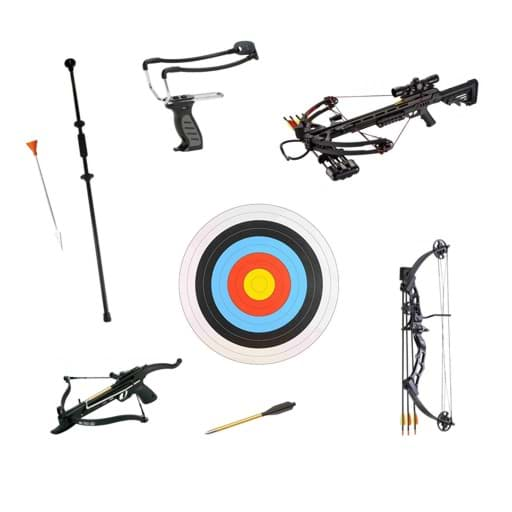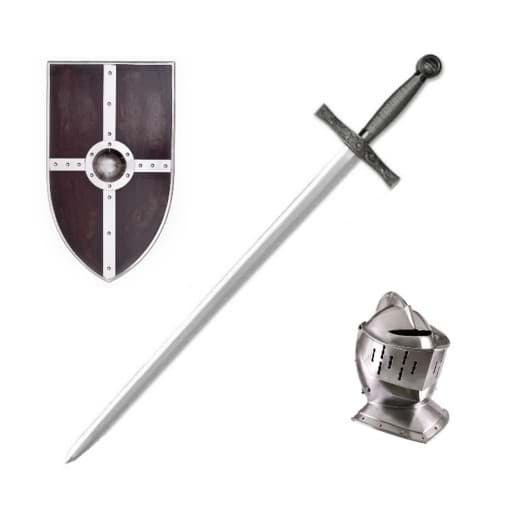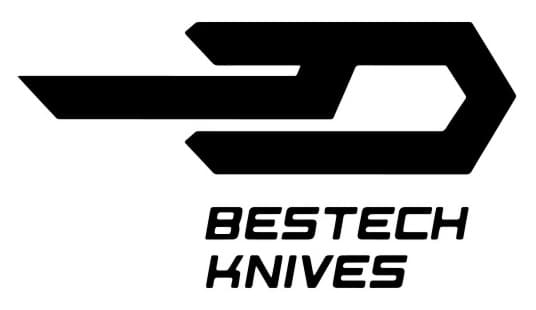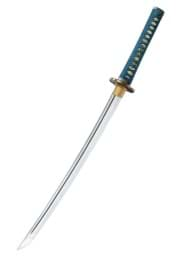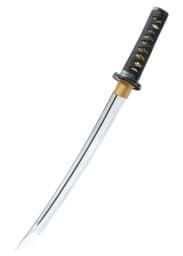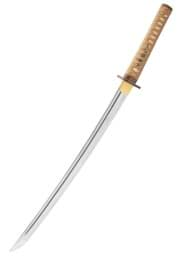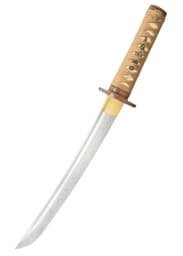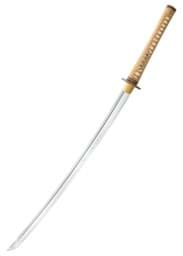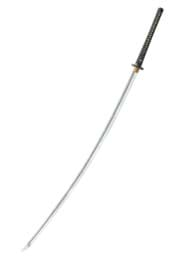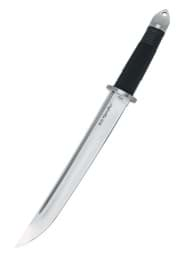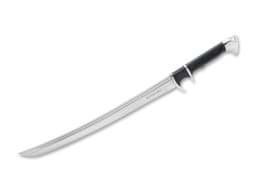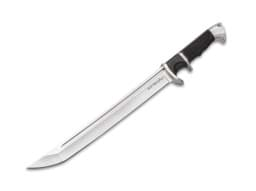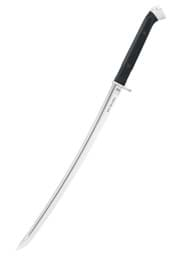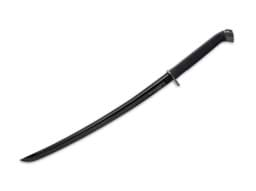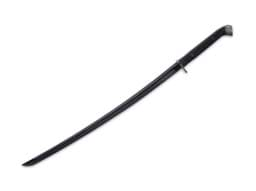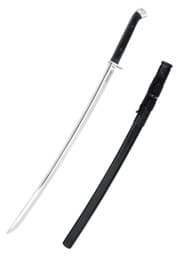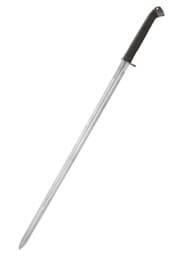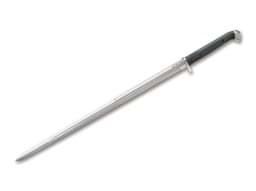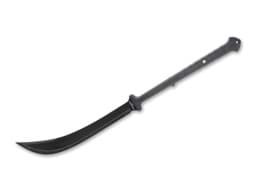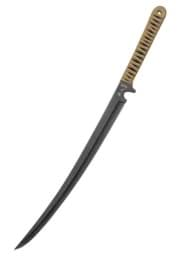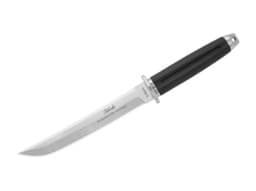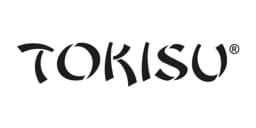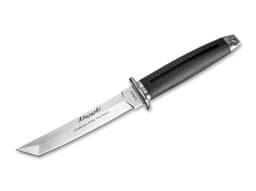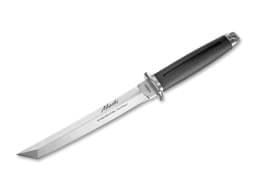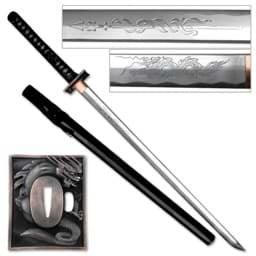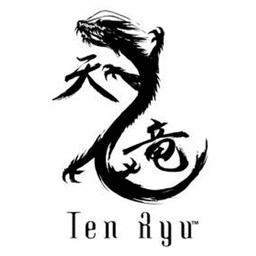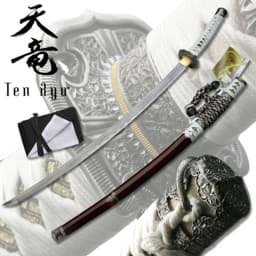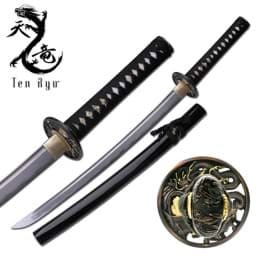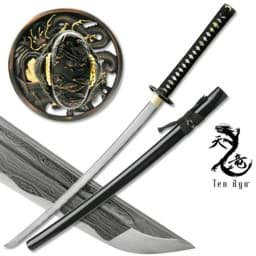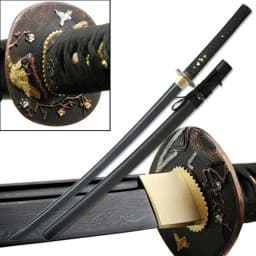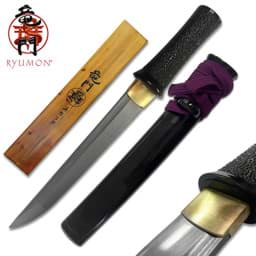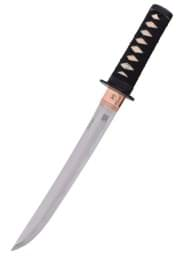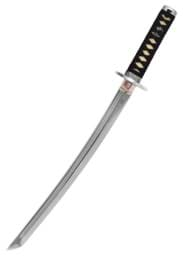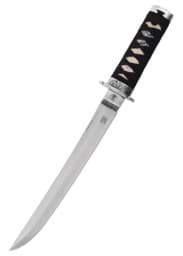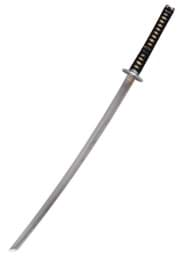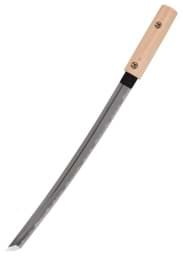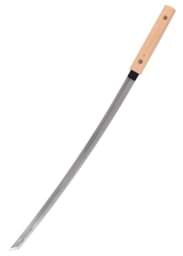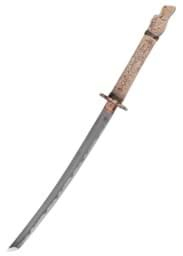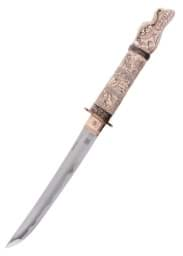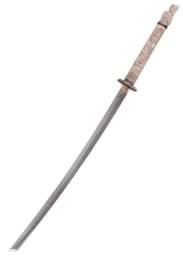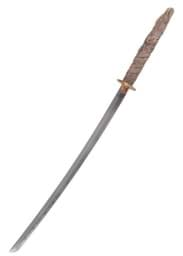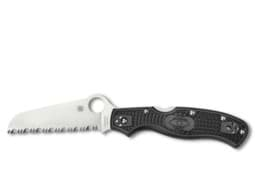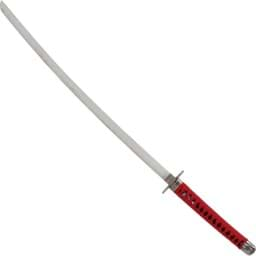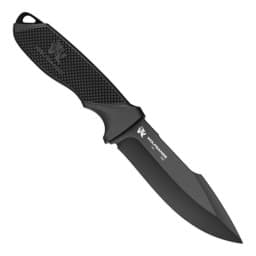Samurai Swords
1-36 of 262
United Cutlery - Shikoto Longquan Master Teal Wakizashi
United Cutlery Shikoto Longquan Master Teal Wakizashi ► Total length 78.1 cm ✓ 50.1 cm long blade ✓ 1060 carbon steel ✓ Weight 720 g ✓ "buy in Switzerland!"
* Prices incl. VAT, plus shipping
United Cutlery - Shikoto Longquan Master Tanto
United Cutlery Shikoto Longquan Master Tanto ► Total length 49.0 cm ✓ 32.0 cm long blade ✓ T10 Carbon Steel ✓ "buy now in Switzerland!"
* Prices incl. VAT, plus shipping
United Cutlery - Shikoto Hidden Samurai Wakizashi
United Cutlery Shikoto Hidden Samurai Wakizashi ► High-quality Wakizashi ✓ Total length 78.1 cm ✓ 50.2 cm long blade ✓ T10 Carbon Steel ✓ "buy in Switzerland!"
* Prices incl. VAT, plus shipping
United Cutlery - Shikoto Hidden Samurai Tanto
United Cutlery Shikoto Hidden Samurai Tanto ► High-quality Tanto ✓ Total length 50.0 cm ✓ 31.0 cm long blade ✓ T10 Carbon Steel ✓ "buy now in Switzerland!"
* Prices incl. VAT, plus shipping
United Cutlery - Shikoto Hidden Samurai Katana
United Cutlery Shikoto Hidden Samurai Katana ► High-quality Katana ✓ Total length 100.3 cm ✓ 69.2 cm long blade ✓ T10 Carbon Steel ✓ Weight 1.3 kg ✓
* Prices incl. VAT, plus shipping
United Cutlery - Shikoto Hammer-Forged Longquan Master Nodachi
United Cutlery Shikoto Hammer-Forged Longquan Master Nodachi ► Total length 167 cm ✓ 125.4 cm long blade ✓ 1060 carbon steel ✓ Weight 2360 g ✓ Buy now!
* Prices incl. VAT, plus shipping
United Cutlery - Honshu Tanto
United Cutlery Honshu Tanto ► Tanto combat knife from the Honshu series ✓ 27.3 cm long blade ✓ Leather sheath ✓ "buy now in Switzerland!"
* Prices incl. VAT, plus shipping
United Cutlery - Honshu Sub-Hilt Wakizashi
United Cutlery Honshu Sub-Hilt Wakizashi ► Total length 71.4 cm ✓ 51.8 cm long blade ✓ 1060 Steel ✓ Handle made of TPR ✓ Weight 1.247 g ✓ buy in Switzerland!
* Prices incl. VAT, plus shipping
United Cutlery - Honshu Sub-Hilt Tanto
United Cutlery Honshu Sub-Hilt Tanto ► Total length 43.8 cm ✓ 28.9 cm long blade ✓ 7CR13 Steel ✓ Handle made of TPR ✓ buy now in Switzerland!
* Prices incl. VAT, plus shipping
United Cutlery - Honshu Boshin Midnight Forge Wakizashi
United Cutlery Honshu Boshin Midnight Forge Wakizashi ► Total length 86.4 cm ✓ 57.2 cm long blade ✓ 1060 Steel ✓ Handle made of TPR ✓ Weight 1.429 g ✓
* Prices incl. VAT, plus shipping
United Cutlery - Honshu Boshin Midnight Forge Katana
United Cutlery Honshu Boshin Midnight Forge Katana ► Total length 103.5 cm ✓ 77.2 cm long blade ✓ 1060 Steel ✓ Handle made of TPR ✓ Weight 1.814 g ✓ buy now!
* Prices incl. VAT, plus shipping
United Cutlery - Honshu Boshin Double Edge Ninja Damascus
United Cutlery Honshu Boshin Double Edge Ninja Damascus ► Total length 102.5 cm ✓ 76.3 cm long blade ✓ Damascus steel ✓ Handle made of TPR (thermoplastic rub...
* Prices incl. VAT, plus shipping
United Cutlery - Honshu Boshin Double Edge Ninja
United Cutlery Honshu Boshin Double Edge Ninja ► Modern Ninja Sword ✓ Total length 103.1 cm ✓ 77.6 cm long blade ✓ 1060 Steel ✓ Handle made of TPR ✓ Buy now!
* Prices incl. VAT, plus shipping
United Cutlery - Combat Commander Thai Nagi Sword
United Cutlery Combat Commander Thai Nagi Sword ► Total length 102.9 cm ✓ 1065 Steel ✓ Handle made of FRN ✓ Weight 1 g ✓ buy now in Switzerland!
* Prices incl. VAT, plus shipping
United Cutlery - Black Ronin Tan Combat Wakizashi
The Black Ronin Tan Combat Wakizashi by United Cutlery is a modern version with a 43.2 cm long blade made of 420er stainless steel and sheath with shoulder s...
* Prices incl. VAT, plus shipping
Tokisu - Takeda
Tokisu Takeda ► Tactical Knives ✓ 19.4 cm long blade ✓ 7Cr177MoV steel ✓ Rubber handle ✓ Weight 253 g ✓ "buy now in Switzerland!"
* Prices incl. VAT, plus shipping
Tokisu - Musashi
Tokisu Musashi ► Tanto utility knife ✓ 15.0 cm long blade ✓ 7Cr177MoV steel ✓ Rubber handle ✓ Plastic sheath ✓ Weight 224 g ✓ "buy now in Switzerland!"
* Prices incl. VAT, plus shipping
Tokisu - Akechi Combat Knife
Tokisu Akechi ► Tanto utility knife ✓ 19.4 cm long blade ✓ 7Cr177MoV steel ✓ Rubber handle ✓ Plastic sheath ✓ Weight 247 g ✓ "buy now in Switzerland!"
* Prices incl. VAT, plus shipping
Ten Ryu - Dragon Ninjato Ninja Sword
Ninja sword (Ninjatō) with 70 cm long blade made of carbon steel, square Tsuba with dragon motifs, handle with ray skin and leather wrapping, lacquered sword...
* Prices incl. VAT, plus shipping
Ten Ryu - Damascus Jintachi
Jintachi with 72 cm long blade made of Damascus steel, handle with ray skin and fabric wrapping, lacquered sword sheath and sword bag. The Damascus Jintachi...
* Prices incl. VAT, plus shipping
Ten Ryu - Damascus Dragon Wakizashi 401
Wakizashi with a 53 cm long blade made of Damascus steel, Tsuba with beautiful dragon motifs, handle with ray skin and fabric wrapping, lacquered sword sheat...
* Prices incl. VAT, plus shipping
Ten Ryu - Damascus Dragon Katana 401
Katana with blade made of Damascus steel and Tsuba with beautifully crafted dragon motifs. Delivered with black lacquered sword sheath (Saya), sword bag, and...
* Prices incl. VAT, plus shipping
Ten Ryu - Black Damascus Katana
Katana with 72.5 cm long blade made of black Damascus steel, handle with ray skin and fabric wrapping, matte black lacquered sword sheath and sword bag. The...
* Prices incl. VAT, plus shipping
Ryumon - Damascus Tanto 3204B
Exquisite tanto with 22 cm long blade made of damascus steel, delivered in a wooden storage box. The Damascus Tanto 3204B by Ryumon
* Prices incl. VAT, plus shipping
Marto - Tanto Knife
Marto Tanto ► Decorative Tanto ✓ Total length 45 cm ✓ 27 cm long blade ✓ Weight 400 g ✓ "buy now in Switzerland!"
* Prices incl. VAT, plus shipping
Marto - Silver Wakizashi
Marto Silver Wakizashi ► Decorative Wakizashi ✓ Total length 75 cm ✓ Weight 1200 g ✓ "buy now in Switzerland!"
* Prices incl. VAT, plus shipping
Marto - Silver Tanto
Marto Silver Tanto ► Decorative Tanto ✓ Total length 45 cm ✓ 27 cm long blade ✓ Weight 400 g ✓ "buy now in Switzerland!"
* Prices incl. VAT, plus shipping
Marto - Silver Katana
Marto Silver Katana ► Decorative Katana ✓ Total length 100 cm ✓ Weight 1400 g ✓ "buy now in Switzerland!"
* Prices incl. VAT, plus shipping
Marto - Shirasaya Wakizashi
Marto Shirasaya Wakizashi ► Decorative Wakizashi ✓ Total length 64 cm ✓ Weight 1200 g ✓ "buy now in Switzerland!"
* Prices incl. VAT, plus shipping
Marto - Katana with Wooden Shirasaya
Marto Katana with Wooden Shirasaya ► Decorative Katana ✓ Total length 98 cm ✓ 70 cm long blade ✓ Weight 1.4 kg ✓ "buy now in Switzerland!"
* Prices incl. VAT, plus shipping
Marto - Immortal Wakizashi
Marto Immortal Wakizashi ► Decorative Wakizashi ✓ Total length 85 cm ✓ Weight 1200 g ✓ "buy now in Switzerland!"
* Prices incl. VAT, plus shipping
Marto - Immortal Tanto
Marto Immortal Tanto ► Decorative Tanto ✓ Total length 52 cm ✓ Weight 1000 g ✓ "buy now in Switzerland!"
* Prices incl. VAT, plus shipping
Marto - Immortal Katana
Marto Immortal Katana ► Decorative Katana ✓ Total length 108 cm ✓ Weight 1400 g ✓ "buy now in Switzerland!"
* Prices incl. VAT, plus shipping
Marto - Highlander Katana Connor MacLeod Red
Marto Highlander Katana Connor MacLeod Red ► Katana from the Highlander movies ✓ Total length 104 cm ✓ 70 cm long blade ✓ Stainless steel ✓ Weight 1500 g ✓
* Prices incl. VAT, plus shipping
Recently viewed products
Spyderco - Rescue 3 Lightweight
CHF 183.00 *
Haller - Manga Katana
CHF 49.00 *
Odenwolf - W1 Full Black
CHF 39.00 *
Cold Steel - AD-15 Black
CHF 439.00 *
MKM - Timavo Black G10
CHF 239.00 *
Herbertz - One-Handed Knife 593512
CHF 109.00 *

